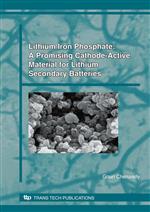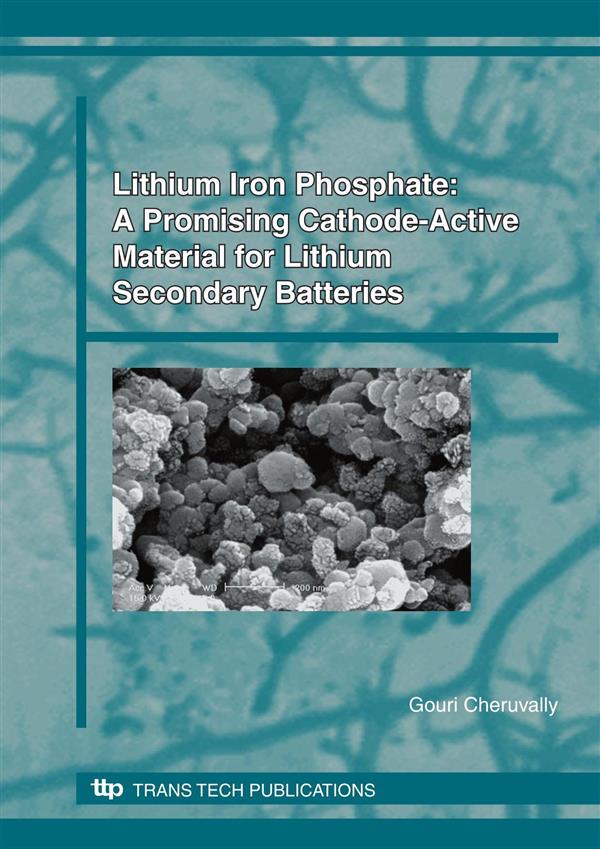Engineering Research
Materials Science
Engineering Series
Lithium Iron Phosphate: A Promising Cathode-Active Material for Lithium Secondary Batteries
Description:
Purchase this book:
Info:
Review from Ringgold Inc., ProtoView:
Nickel-cadmium and nickel-metalhydride batteries have largely become obsolete, especially in portable electronic devices. Taking their place are lighter, more efficient lithium batteries, which are still in development to improve their performance and safety at lower cost. Here Cheruvally (chemistry, Vikram Sarabhai Space Center, India) reviews research on developing lithium iron phosphates as positive electrode materials that have the potential to replace transition metal oxides. She gives basic information on batteries as electrochemical energy sources, then describes lithium iron phosphate as a cathode material and presents nearly a dozen different methods of synthesizing it for experimentation or production. She describes the influence of synthesis parameters on the properties of lithium iron phosphates, the synthesis and properties of metal ion-doped lithium iron phosphate, the influence of different parameters (including cell components and operating temperature) on the cathode, safety and storage issues, theoretical and modeling studies, and phosphate olivines as cathode-active materials.

